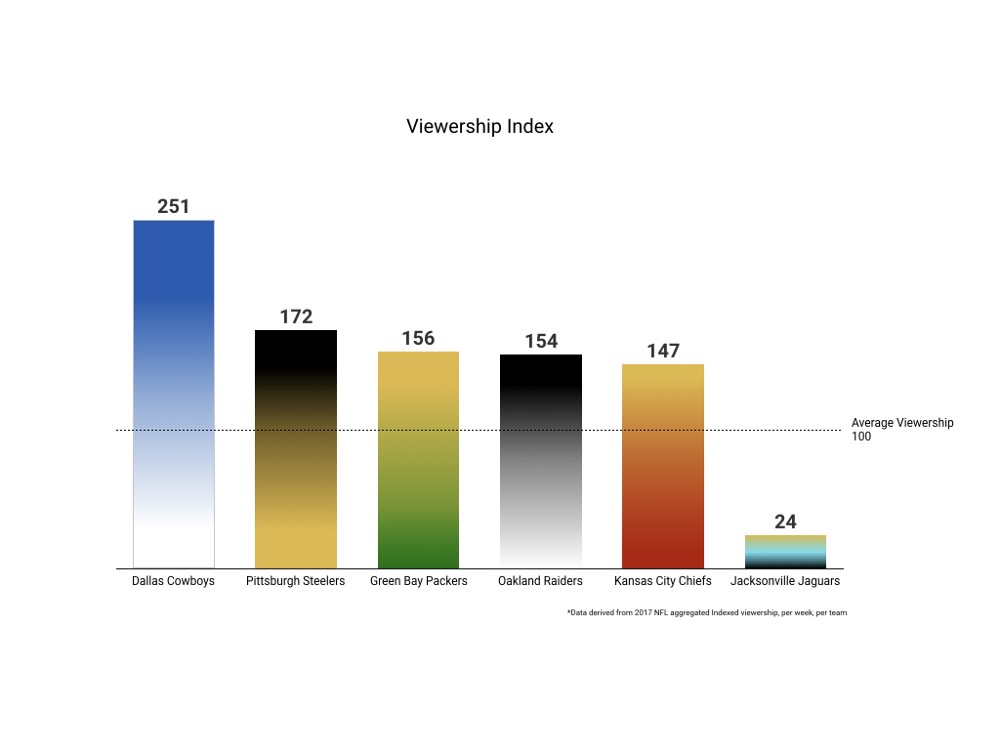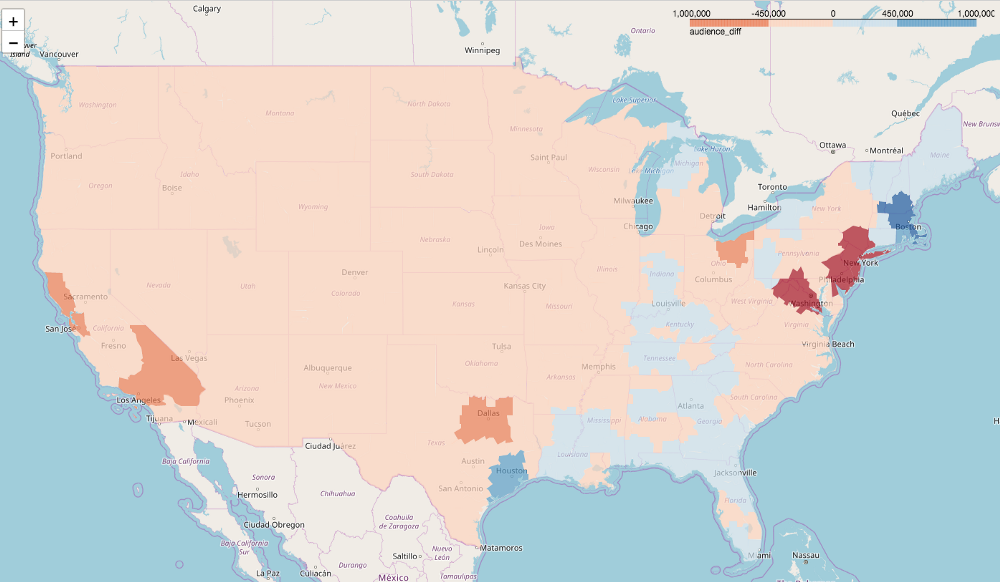Winning Teams Don’t Always Make for the Best Audiences

Sports fans can be diehard hometown loyalists or fickle fair weather supporters of whomever happens to be convenient. But for the Big Game, most fans have to pick sides and their team may not be in the running.
How do team loyalties translate to other franchises? For instance:
- Are Raiders fans on Team Eagles or Team Patriots?
- How about Seahawk fans?
- Does the entirety of New York resent being sandwiched in the middle of this year’s Northeastern rivalry?
VideoAmp’s data science team crunched the numbers to forecast anticipated preference for each of the two teams facing off in the Big Game across the country. Who knew, according to our data models, that it would appear:
- Southerners would be such supporters of their Northern neighbors?
- Dallas would be rooting for the Eagles?
Not to be taken at face value, the NFL viewership story to be told is far more nuanced and interesting!
What does it actually mean when an athletic team’s raucous support happens in the living room instead of the stadium? Can linear NFL viewership tell us which teams have the largest, most fervent fanbases? The answer is both yes and no.
Recap: 2017 NFL Season Viewership
If historical viewership modeling were the only factor in picking sporting event winners, our data shows that the Dallas Cowboyswould win the Big Game. It wouldn’t even be close.
According to our models, the below teams that over-index on viewership averages would be the top favorites for the Big Game based on seasonal viewership:

This data is fairly unsurprising, as each of the top 5 over-indexing teams are known for their aggressively loyal fans. They are the type that, even if they relocate and disperse throughout the country, remain loyal and rarely abandon their hometown team.
There are certainly other variables that affect team viewership, but franchise legacy is an extremely influential one. Notable is the fact that the Packers — celebrated for their franchise, their quarterback, their stadium, and their fandom — still managed to gain top viewership this season despite an injured Aaron Rodgers and their first missed playoff season since 2008. In their case, high viewership was not indicative of a winning streak.
Does franchise legacy and loyalty trump a stellar season like the Eagles had this past year? It’s possible — especially when taking into consideration the control and power over viewership that the networks wield. A lackluster team playing a mediocre one nearing the end of the season may not be aired on TV as widely as another. Further, ‘Game of the Week’ picks are favored nationwide, making a lackluster season’s intense viewership, in the case of the Packers, even more impressive.
Does winning make a difference? The Patriots and Eagles had high viewership, but fell in the middle of the pack. And, though the Jacksonville Jaguars put up a valiant effort against the Patriots in the AFC Championship game, their fan base seems apathetic at best, coming in nearly 4x below average viewership for the 2017 season.
Takeaway for advertisers? Winning teams don’t always equate with the largest and most engaged audiences.
Choosing Sides: Predicting the Nationwide Breakdown of Preferences for the Big Game
At VideoAmp, we used viewership models from the 2017 NFL season as well as our proprietary forecasting algorithm to determine if viewership forecasting can provide an accurate breakout of which of the final two teams key regions across the country are planning to root for.
If the majority rules, and is an indication of a team’s probability to win the Big Game, then the Philadelphia Eagles will be hoisting the Lombardi Trophy on February 4th. Though, as we all know, no matter how hated the Patriots may be outside of New England, Tom Brady knows how to win rings with or without the country behind him.

Further, not only does high viewership fail to guarantee wins, but it may not even be an accurate metric against which to measure winner preference. For example, you may be a Patriots fan living in Dallas, but — due to your local team’s Division — you’ll be watching the Cowboys and Eagles face off twice a season, and likely be seeing more NFC than AFC games!
Is linear viewership forecasting truly indicative of team preference? Yes, in the obvious cases of Boston and Philadelphia. But the data is less clear when we consider Dallas, which — according to viewership data — is ironically leaning toward rooting for their bitter rival, the Eagles. WHAAAT?
What about the other two teams in the NFC East? The New York Giants and the Washington Redskins are both curiously deep in the red, seemingly inclined to cheer on the Eagles. Sure, Giants fans have a long post-season rivalry with the Patriots and could potentially be rooting for their Division rivals in solidarity. But are they?
Ultimately we may have learned that high viewership cannot always accurately indicate fandom or even preference in the Big Game outcome.
So What Does Viewership Data Actually Tell Us?
What modeling viewership forecasting can do, however, is give advertisers a competitive edge when it comes to more accurately targeting both fans andhaters (in other words watchers!) of any given NFL team, no matter where they are. After all, what advertisers need most is an audience and its attention.
With dispersed fanbases, lower traditional ratings, and savvy fans finding more ways to watch their team play on any given Sunday, advertisers need to apply data-driven audience targeting. They need to find highly engaged audiences in exact markets, across all connected and conventional TV and video screens, in order to develop a football advertising strategy that is truly worthy of a Lombardi Trophy.
